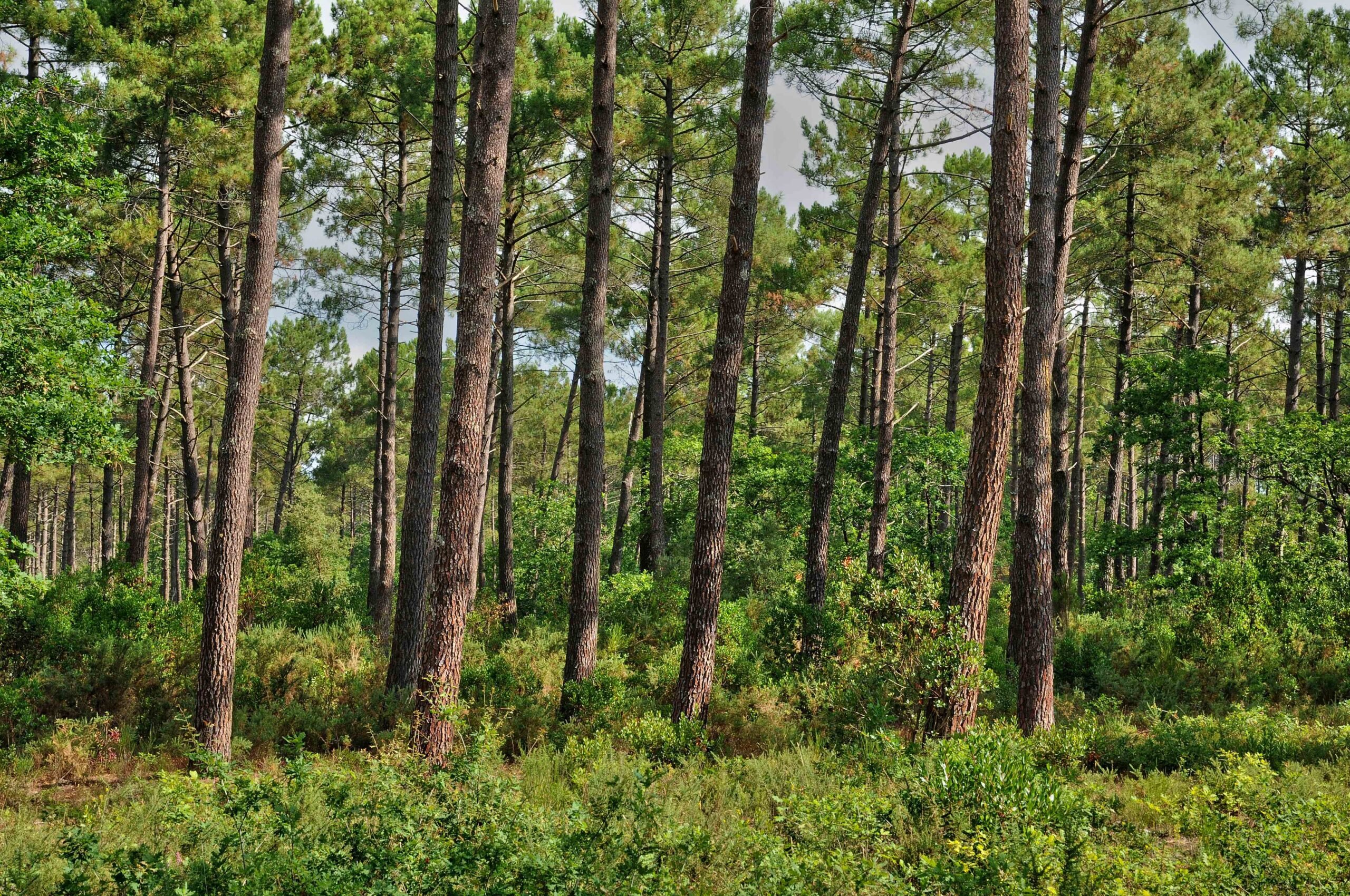Efforts to improve biodiversity in Europe’s woodlands will help them better withstand the stresses of climate change.
By Alison Jones
In a vast sandy pine forest bordering the Atlantic Ocean in south-west France, an innovation is taking root. A corner of the million hectares of towering maritime pines is part of an EU-funded project offering a new vision of reforestation.
The Aquitaine site in the SUPERB project is growing a “green shield” hedgerow made of broad-leaf shrubs and trees such as oak. The goal is to create habitats for communities of birds, animals and insects and to give scientists a chance to assess improvements in biodiversity.
Big ambitions
While the pine trees are thriving, monocultures like this with just a single species don’t lend themselves to a diverse population of birds and animals. This makes the trees more vulnerable to invasive pest outbreaks, which are likely to increase as temperatures rise.
In response, 10 kilometres of hedgerow are being planted in “corridors” across 20 000 hectares to connect pockets of existing broad-leaf species. The idea is to form a physical barrier to increase resilience to pests and diseases and potentially other threats that may increase with a warming planet such as winds, storms, wildfires and drought.
‘No project before has been so ambitious in upscaling,’ said Christophe Orazio, chief executive officer of the France-based European Institute of Planted Forest and one of the SUPERB coordinators.
Demo dozen
Aquitaine is one of 12 pilot sites across Europe coordinated through SUPERB, which has 36 partners in 16 countries. The project runs for four years through November 2025.
Led by the European Forest Institute (EFI), the €20 million initiative aims to restore thousands of hectares of forest spanning diverse landscapes from the old-growth mountain forests of the Carpathian mountains to the deciduous woodlands of the floodplains and agricultural lands of the south.
The 12 demonstration sites were selected to represent different types of forest and understand the distinct stressors that threaten the survival of these woodlands.
In the German state of North Rhine-Westphalia, for example, the project aims to replant hundreds of thousands of acres of forest devastated by bark beetle infestations. The dieback is so great in some regions that forest owners are financially unable to manage restoration without assistance.
By comparison, restoration of the Serbian-Croatian floodplain forest will be on a far more modest scale. Nonetheless, by diversifying species, it will reverse habitat loss, improve flood control for agriculture and make the forest more resilient to the effects of climate change.
Under SUPERB, the French National Research Institute for Agriculture, Food and Environment, or INRAE, is carrying out a mass biodiversity inventory over the next two years.
‘The results could make a difference for the future health of forests here and in countries with significant forest plantations such as Sweden, Portugal and Spain,’ Orazio said.
Numerous partners
Interaction with local organisations, political partners and financial backers under the project ensure that restoration efforts can be expanded and sustainably funded beyond 2025.
Multiple local organisations have committed in-kind contributions of €90 million to explore successful forest restoration and lay the ground for replicating the learning on a larger scale.
Funders have been drawn to the project’s approach to restoration that goes beyond carbon offsetting. It now plans to set up a “marketplace” to match donors with new reforestation initiatives.
‘Restoration is happening in a lot of areas of the world, but maintaining and sustainably managing projects in the longer term is often a very big problem,’ said Gert-Jan Nabuurs, professor of European forest resources at Wageningen University in the Netherlands and co-coordinator of SUPERB.
Almost 100 “associated partners” have already pledged to apply the project’s restoration methods on their land. Detailed work plans and careful data collection mean progress can be closely monitored.
SUPERB also has three sister projects allied to different ecosystems – WaterLANDS, MERLIN, REST-COAST – and draws on their experiences.
Economic stakes
While the project seeks to foster a sense of ownership by local communities, some landowners are reluctant to engage because they fear the impact of environmental measures on the forestry trade.
‘People can think science is out to limit the profitability of the forest, but in fact it’s the opposite,’ said Professor Magda Bou Dagher Kharrat, principle scientist at EFI and part of the SUPERB coordination team. ‘We care about the sustainability of the forest and that means its income too. Our goal is to help people manage it so that it’s here for the future to continue providing its wide range of ecosystem services.’
The project is keen to help people better understand the importance of forest restoration.
Forests have long been a source of storytelling inspiration and SUPERB is drawing on this tradition to share “restoration stories” in online blogs penned by individual project researchers. Putting human faces to the activities being carried out helps to convey the overall benefits.
‘Restoration will help us to have stronger, more beautiful forests we can all enjoy,’ said Nabuurs.
He also stressed the economic value of European forests, saying they are the source of commodities such as wood and paper.
As the impact of climate change is increasingly felt across Europe, the stakes are high for the project.
Bou Dagher Kharrat said global warming has given forest replanting a whole new context.
‘Restoration was once about trying to take a forest back to a point in the past,’ she said. ‘Now restoration must look forward in the face of climate change. We call it “pre-storation” – combining restoration and adaptation so that our forests can withstand future challenges for the benefit of people and planet.’
This article was originally published in Horizon, the EU Research and Innovation Magazine.

